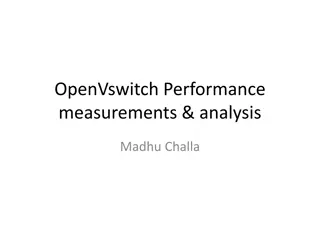
Advanced Communication System for Defense Forces | M7 VHF/UHF Radios
Explore the cutting-edge M7 VHF/UHF radios designed to meet the demanding communication needs of defense forces. With features like high RF power, electronic protection measures, and dual-use operations, these radios offer continuous coverage from 100MHz to 400MHz. Operate the radio in different modes and remotely using compatible control equipment.
Download Presentation

Please find below an Image/Link to download the presentation.
The content on the website is provided AS IS for your information and personal use only. It may not be sold, licensed, or shared on other websites without obtaining consent from the author. If you encounter any issues during the download, it is possible that the publisher has removed the file from their server.
You are allowed to download the files provided on this website for personal or commercial use, subject to the condition that they are used lawfully. All files are the property of their respective owners.
The content on the website is provided AS IS for your information and personal use only. It may not be sold, licensed, or shared on other websites without obtaining consent from the author.
E N D
Presentation Transcript
Presented by T.MADHUBABU (M110448EE)
1.Control system group 2.Computer maintenance group 3.Communication systems group 4.Components group 5.Strategic Electronics group 6.Instrument group
M7 VHF/UHF range of radios is designed for defense forces fulfilling a comprehensive range of demanding communication needs in the fixed, maritime, deployable applications. High RF power: 50W AM, 100W FM Multimode software defined radio Electronic protection measures (EPM) Continuous AM and FM coverage from 100MHz - 400MHz Integrated Power Supply
M7 is ideally suited for dual use operations continuous AM and FM coverage from 100 to 400 MHz includes 118-137 MHz Commercial ATC 137-156 MHz Land Mobile band 156-163 MHz Maritime band and 225-400 MHz Military band.
Radio can be operated in Two modes: o EPM (electronic protection measure) DIGITAL V/UHF XS o Non-EPM DIGITAL V/UHF X Radio can be operated in following ways: Locally using the front panel controls and indicators Remotely using an DIGITAL V/UHF series controller Remotely using compatible control equipment
Harmonics Modulation Sensitivity Selectivity Frequency response Distortion squelch
The DIGITAL V/UHF C remote controller allows one or more DIGITAL V/UHF radios to be operated from a remote location The Control Head can also be used separately as a Remote Controller the desktop controller consists of an AC/DC power supply and an interface card.
Waveform Profiles A waveform profile is a set of instructions stored in the radio that define a mode of operation and certain parameters associated with the mode. Up to 20 waveform profiles can be created and stored in the radio. Frequency Preset There are three methods of tuning the radio o Tuning Using the Current Waveform Profile o Tuning by Recalling a Stored Waveform Profile o Tuning by Recalling a Stored Frequency Preset
E1-RIC provides a digital end-to-end connection between the radios and a digital VCCS using E1 data. Digital Networks: Consolidates digital audio, E&M and RCMS for 29 channels onto a single E1 bearer Fault tolerant distributed architecture for safety critical applications
Consolidates RCMS for 32 channels onto a single data port Provides automatic main/standby 4-wire E&M switching
E1 RIC compatible with PAE and M7 series radios Radio compatibility Channel supported Each E1 RIC supports 8 simplex channels ,or 8 duplex channels Undedicated Inputsand Outputs 4 user configured inputs and outputs, monitored and controlled via RCMS (PAE MARC) are available. Operating temperature Storage temperature -20 C to +55 C -30 C to +70 C E1 Characteristics 2.048 M bits/s using a balanced 120 ohm electrical interface Response times Voice latency E and M signaling RCMS data 0.25 ms 4 ms 50 ms
Voice and Signalling Routing Conventions-Transmit Circuits Routing Convocations -Receive Circuits RCMS Data Voice selection
RCMS data available in two formats: It is available in time slot T31 of the E1 data stream that connects the VCCS. Any RCMS information required by the VCCS is decoded whilst passing the data on to the MARC application. It is available in RS232 format on the facilities connector and the Auxiliary connector. (This is normally used in an analogue applications



